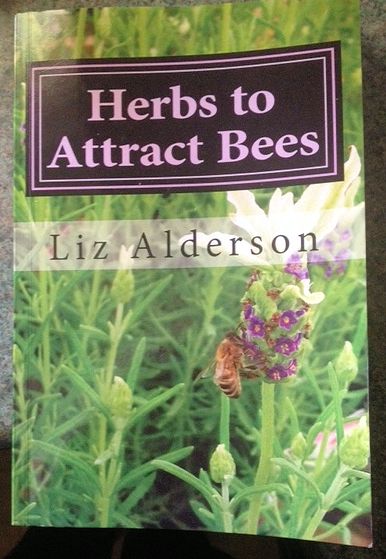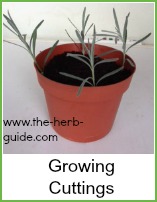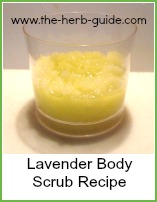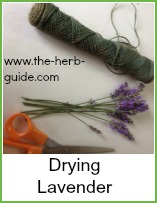- The Herb Guide Home
- Growers Dictionary
- Damping Off
Growing Lavender
As an Amazon Associate I earn from qualifying purchases
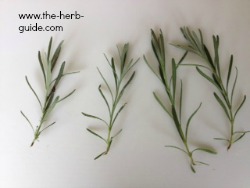
Growing lavender is quite easy to do from cuttings.
The photos are from a Hidcote Lavender I have growing in my garden.
Save the Planet - urban bees are doing better than country bees - read how you can help the 'cause' - all is not lost!
- cultivation tips
- herbal cosmetics
- herbal remedies
- preserve herbs
- 150 bee friendly plants
- cope with bee stings
- gardener's glossary
All this and more - available now via Amazon (Kindle version as well as paperback)
You have to choose some non flowering shoots. On the right here, you can see there is a clump growing at the back behind the lavender flowers.
I've pulled it forwards so you can see better.
This photo was taken in late summer and that's a good time to find the shoots.
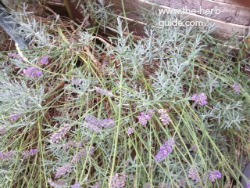
Here's a close up.
You take a shoot - around 4 inches is a good length - and pull gently so that it brings a bit of parent stem away with it.
This is known as a 'heel cutting' and is a good method for woody type shrubs like lavender.
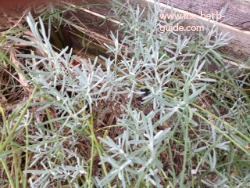
Growing lavender - tips on cuttings
If you can't get a 'heel' cutting because the shoots are too long, then cut a shoot about four inches in length (10 centimetres). You then strip off the bottom leaves which will expose the areas on the stem where the growth hormone is concentrated in the plant.
A heel cutting tends to be 'semi-ripe' and is a favourite of most gardeners as there is less chance of the bottom of the cutting dying back and rotting in the soil. If that happens, that cutting fails and the chances are it might introduce pathogens into the soil which will also make the rest of the cuttings fail.
So long as you trim to a leaf node, there is little chance of the area rotting.
I have taken four cuttings to demonstrate how to propagate lavender.
You need to strip the leaves off the bottom half of each cutting.
Do this carefully so you don't damage the stems - they are still quite tender.

Here they are with the bottoms leaves stripped off.
The cuttings at this time of year are generally referred to as 'semi-ripe'.
They have a good chance of striking and you will have lovely plants to set out in the Spring.
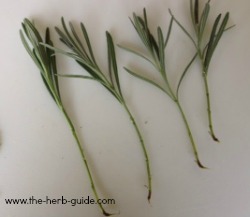
If you look closely at this photo, you will see the slight 'heel' at the bottom where it was attached to the lavender plant.
You can also see it is turning brown, growing into wood from the tender green stems - this is semi-ripe - the other types of cuttings are softwood and hardwood.
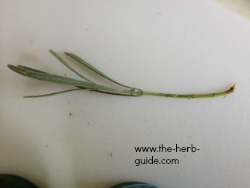
Click here to go to the next steps on how to grow lavender - too many photos on one page make it slow to load, so I've split this tutorial into two parts.
I may receive a commission if you purchase something mentioned in this post. See more details here This will not affect the amount you pay.

